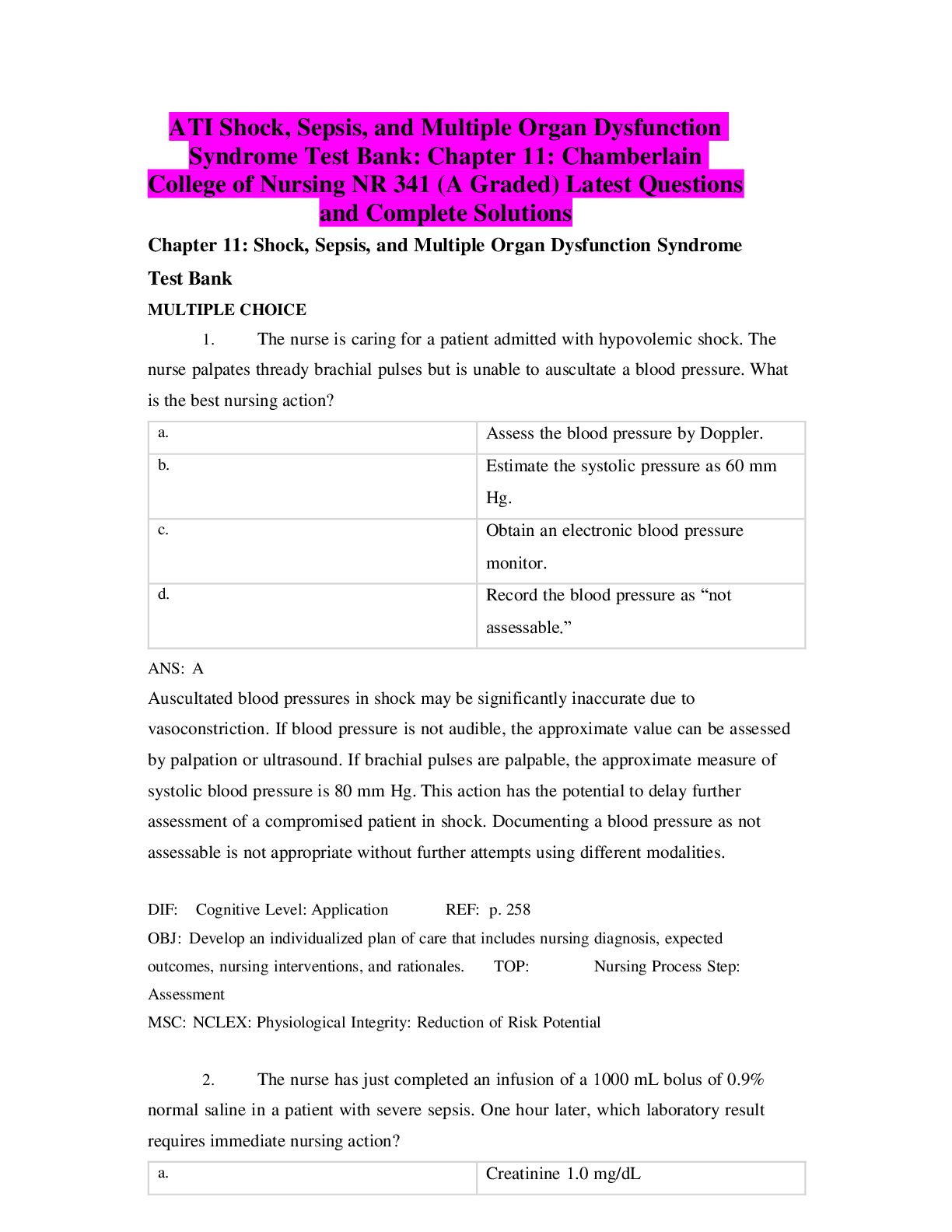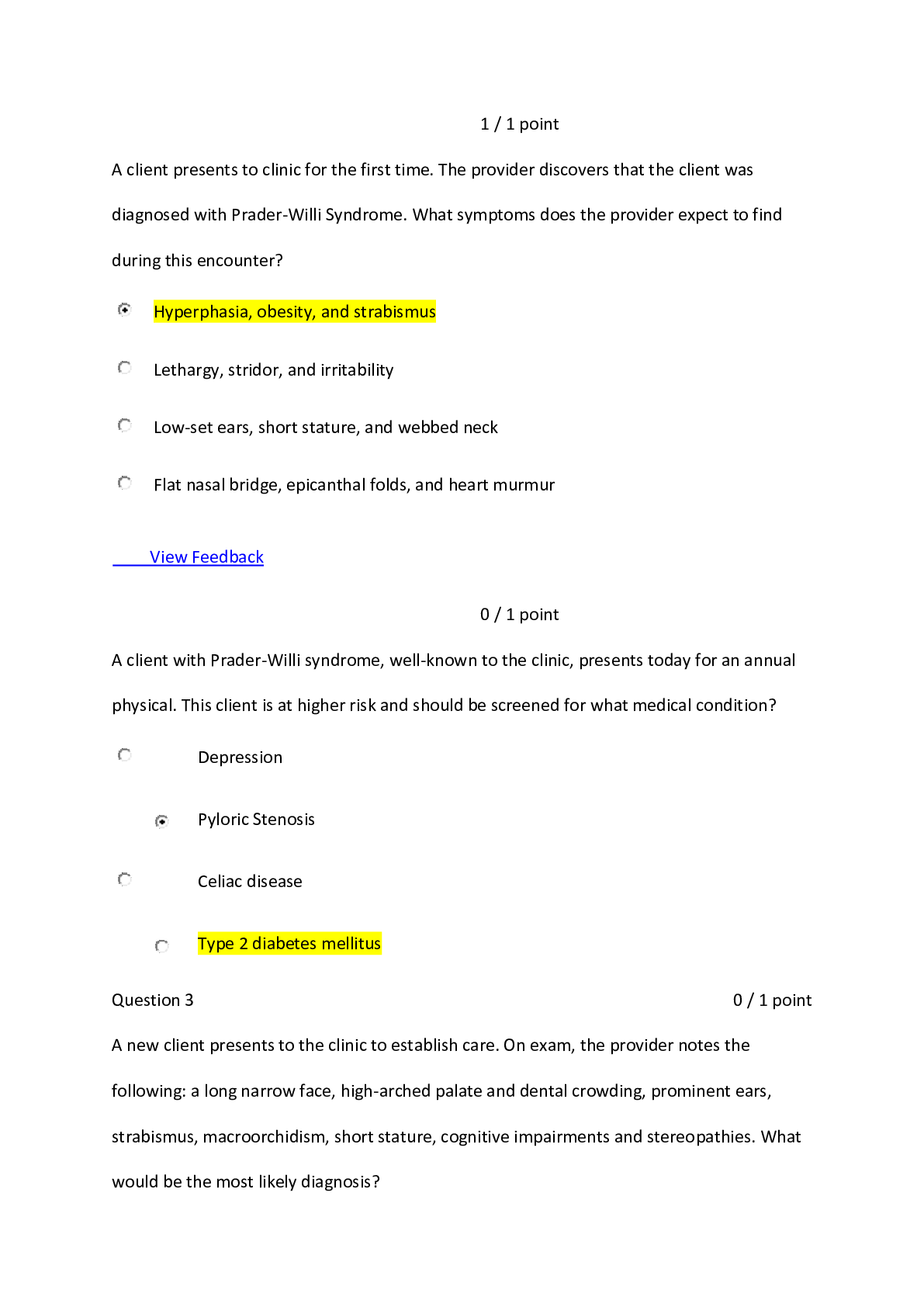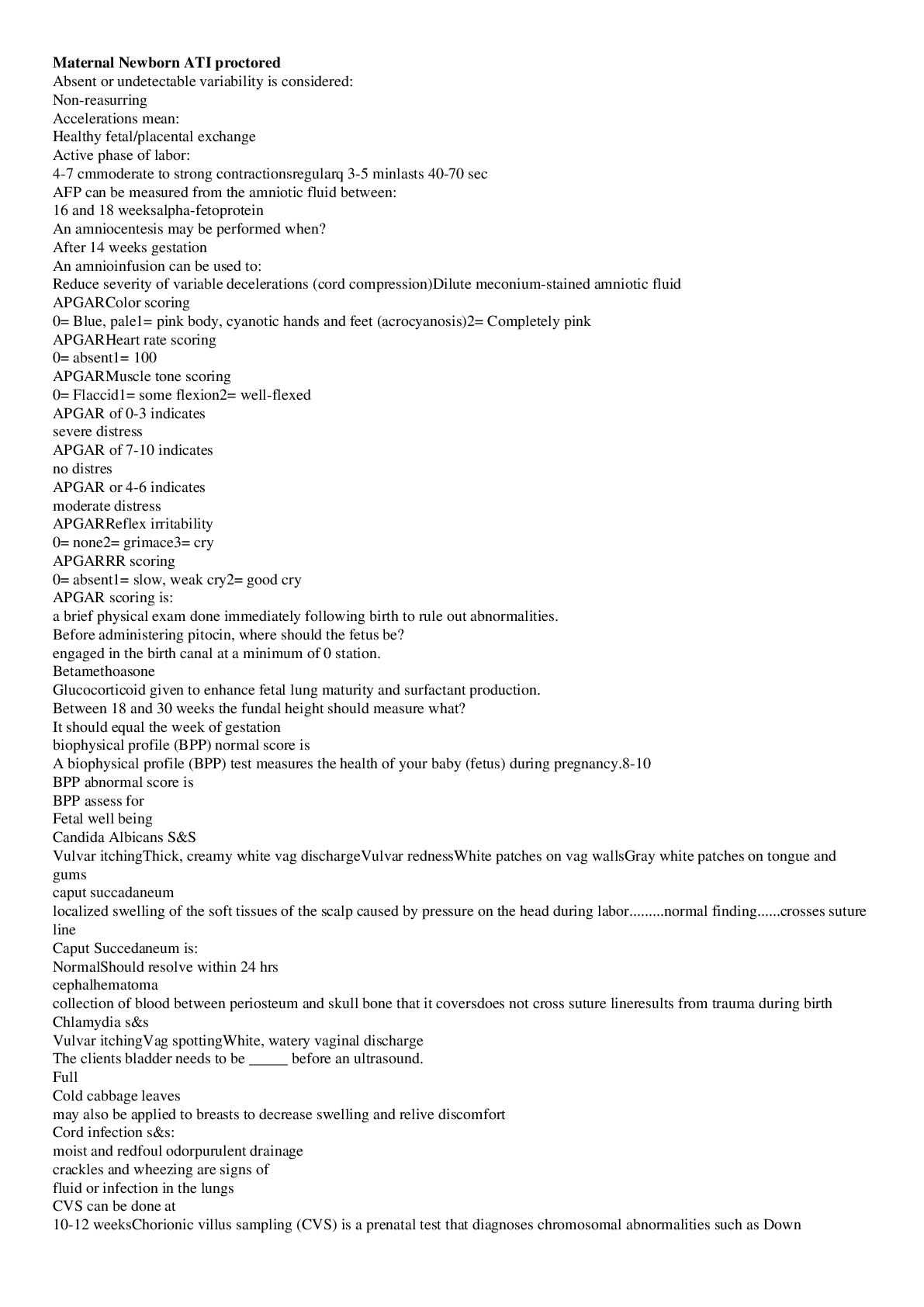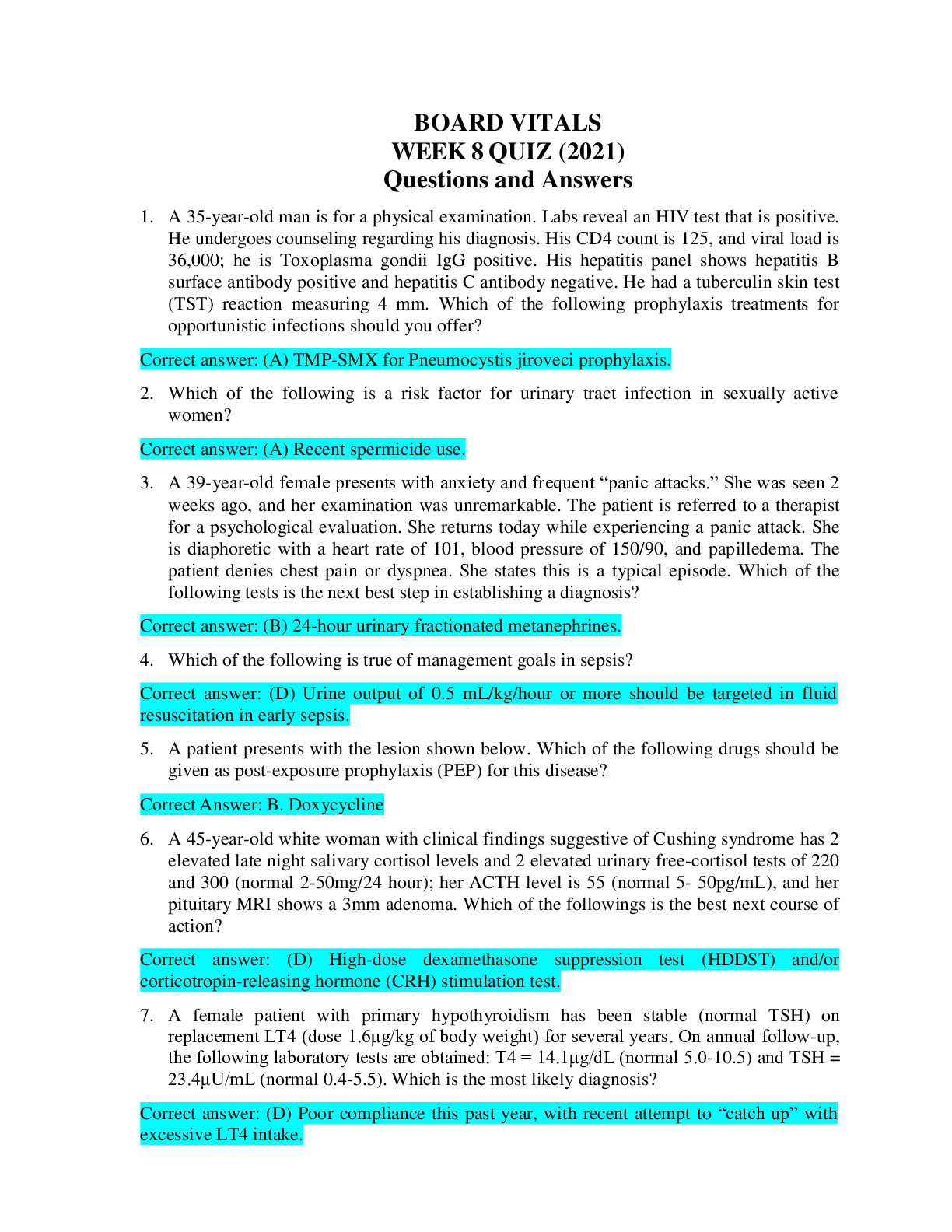Health Care > QUESTIONS & ANSWERS > ATI Shock, Sepsis, and Multiple Organ Dysfunction Syndrome Test Bank: Chapter 11: Chamberlain Colleg (All)
ATI Shock, Sepsis, and Multiple Organ Dysfunction Syndrome Test Bank: Chapter 11: Chamberlain College of Nursing NR 341 (A Graded) Latest Questions and Complete Solutions
Document Content and Description Below
ATI Shock, Sepsis, and Multiple Organ Dysfunction Syndrome Test Bank: Chapter 11: Chamberlain College of Nursing NR 341 (A Graded) Latest Questions and Complete Solutions Chapter 11: Shock, Sepsis, a... nd Multiple Organ Dysfunction Syndrome Test Bank MULTIPLE CHOICE 1. The nurse is caring for a patient admitted with hypovolemic shock. The nurse palpates thready brachial pulses but is unable to auscultate a blood pressure. What is the best nursing action? a. Assess the blood pressure by Doppler. b. Estimate the systolic pressure as 60 mm Hg. c. Obtain an electronic blood pressure monitor. d. Record the blood pressure as “not assessable.” ANS: A Auscultated blood pressures in shock may be significantly inaccurate due to vasoconstriction. If blood pressure is not audible, the approximate value can be assessed by palpation or ultrasound. If brachial pulses are palpable, the approximate measure of systolic blood pressure is 80 mm Hg. This action has the potential to delay further assessment of a compromised patient in shock. Documenting a blood pressure as not assessable is not appropriate without further attempts using different modalities. DIF: Cognitive Level: Application REF: p. 258 OBJ: Develop an individualized plan of care that includes nursing diagnosis, expected outcomes, nursing interventions, and rationales. TOP: Nursing Process Step: Assessment MSC: NCLEX: Physiological Integrity: Reduction of Risk Potential 2. The nurse has just completed an infusion of a 1000 mL bolus of 0.9% normal saline in a patient with severe sepsis. One hour later, which laboratory result requires immediate nursing action? a. Creatinine 1.0 mg/dL b. Lactate 6 mmol/L c. Potassium 3.8 mEq/L d. Sodium 140 mEq/L ANS: B Lactate level has been used as an indicator of decreased oxygen delivery to the cells, adequacy of resuscitation in shock, and as an outcome predictor. All other listed values are within normal limits and do not require additional follow-up. DIF: Cognitive Level: Application REF: p. 259 | Laboratory Alert OBJ: Relate assessment findings to the classification and stage of shock. TOP: Nursing Process Step: Assessment MSC: NCLEX: Physiological Integrity: Reduction of Risk Potential [Show More]
Last updated: 1 year ago
Preview 1 out of 35 pages
Instant download

Buy this document to get the full access instantly
Instant Download Access after purchase
Add to cartInstant download
Reviews( 0 )
Document information
Connected school, study & course
About the document
Uploaded On
May 24, 2021
Number of pages
35
Written in
Additional information
This document has been written for:
Uploaded
May 24, 2021
Downloads
0
Views
28





, (A Grade), Questions and Answers, All Correct Study Guide, Download to Score A.png)
, Questions and Answers, All Correct Study Guide, Download to Score A.png)
, Latest Questions and Answers with Explanations, All Correct Study Guide, Download to Score A.png)
, Latest Questions and Answers with Explanations, All Correct Study Guide, Download to Score A.png)
, Latest Questions and Answers with Explanations, All Correct Study Guide, Download to Score A.png)
, Latest Questions and Answers with Explanations, All Correct Study Guide, Download to Score A.png)
 (Verified Answers, COMPLETE GUIDE FOR EXAM PREPARATION).png)
 All Correct Answers, Download to Score A.png)


 Med Surg test Questions and Answers with Explanations, 100% Correct, Download to Score A.png)
 Questions and Answers (latest Update), 100% Correct, Download to Score A.png)

.png)

 Questions and Answers (latest Update)Download to Score A.png)
 Correct Study Guide, Download to Score A.png)
 FINAL TEST 1, Latest Questions and Answers with Explanations for Revision, All Correct Latest Review, (Latest 2021) Correct Study Guide, Download to Score A.png)


